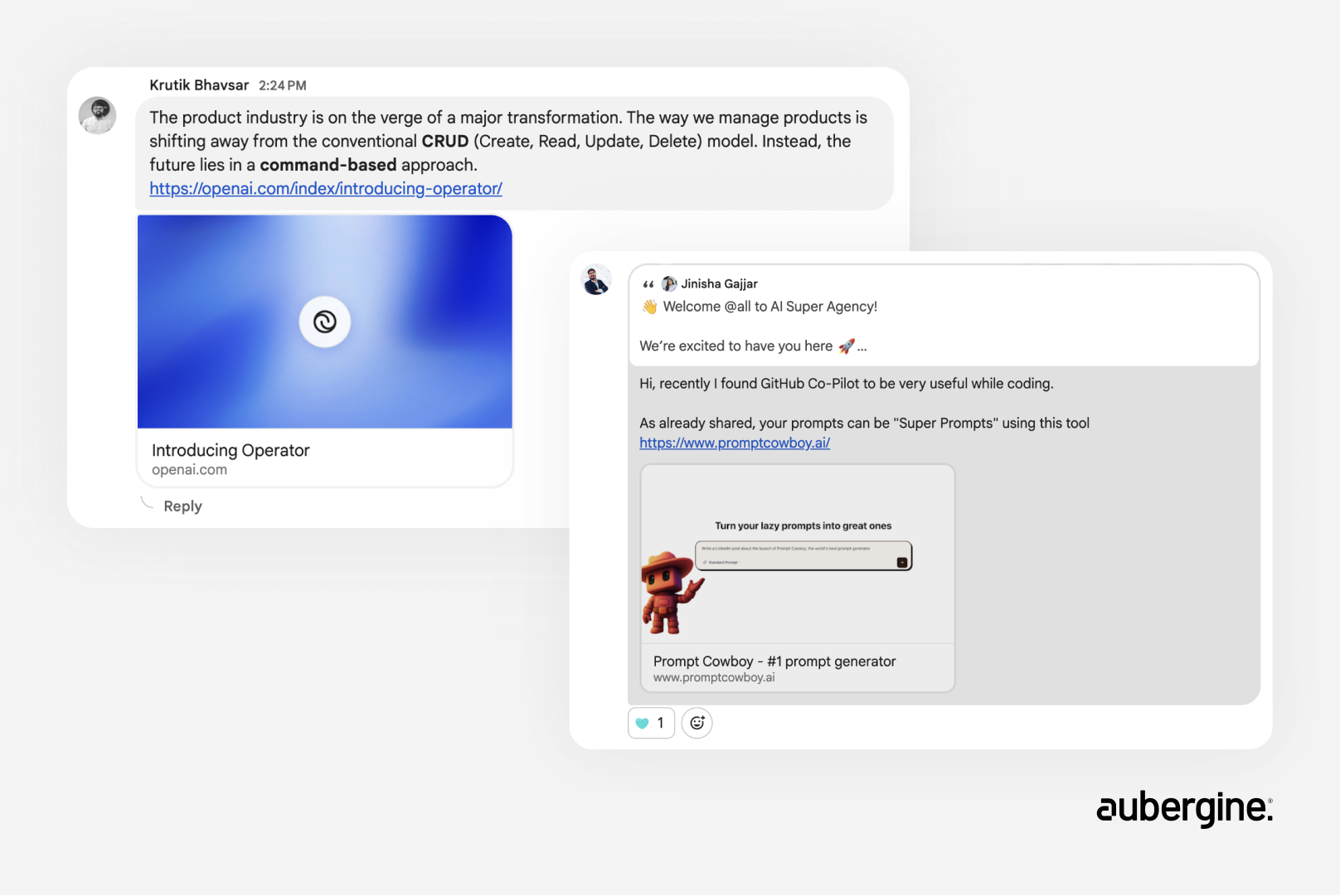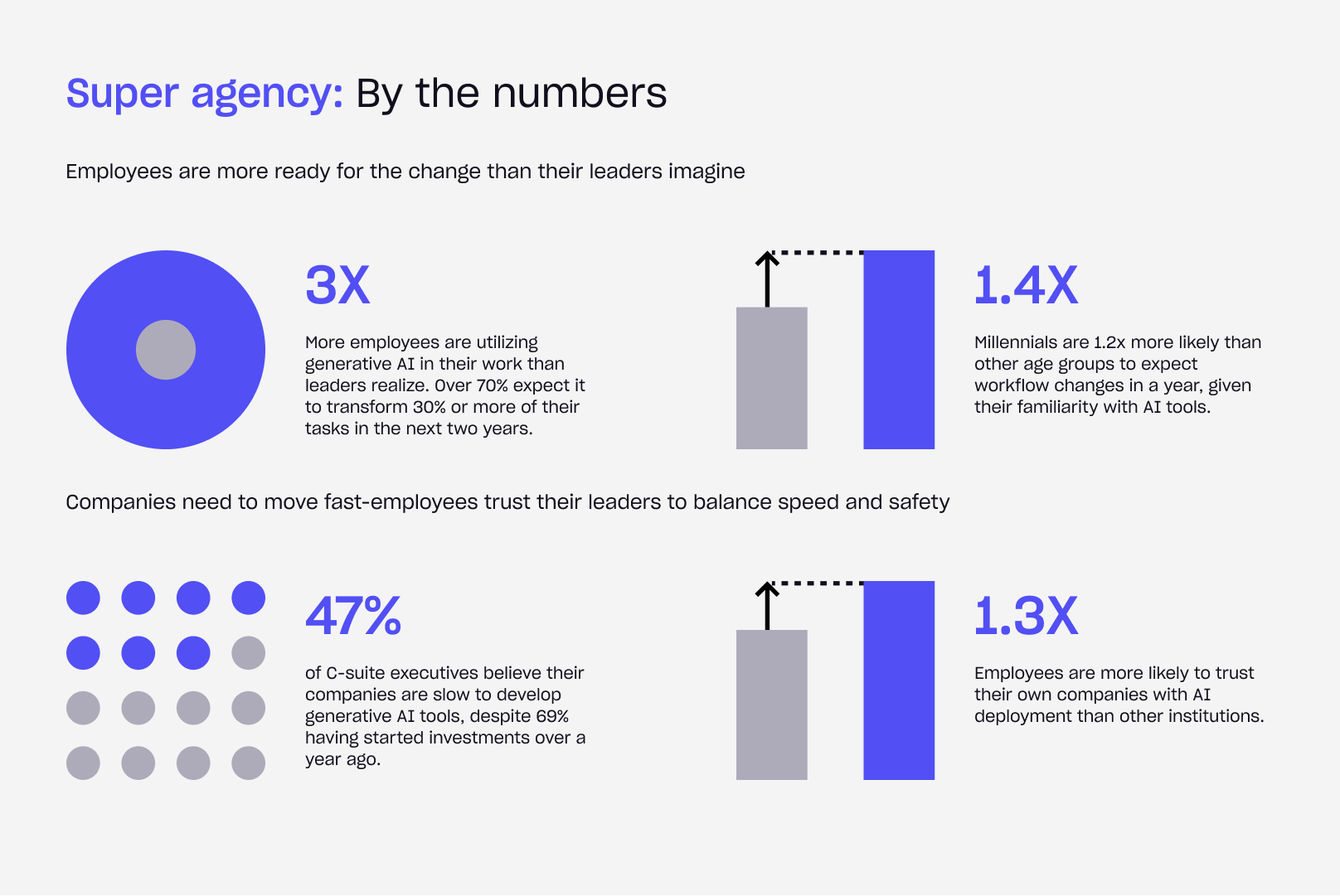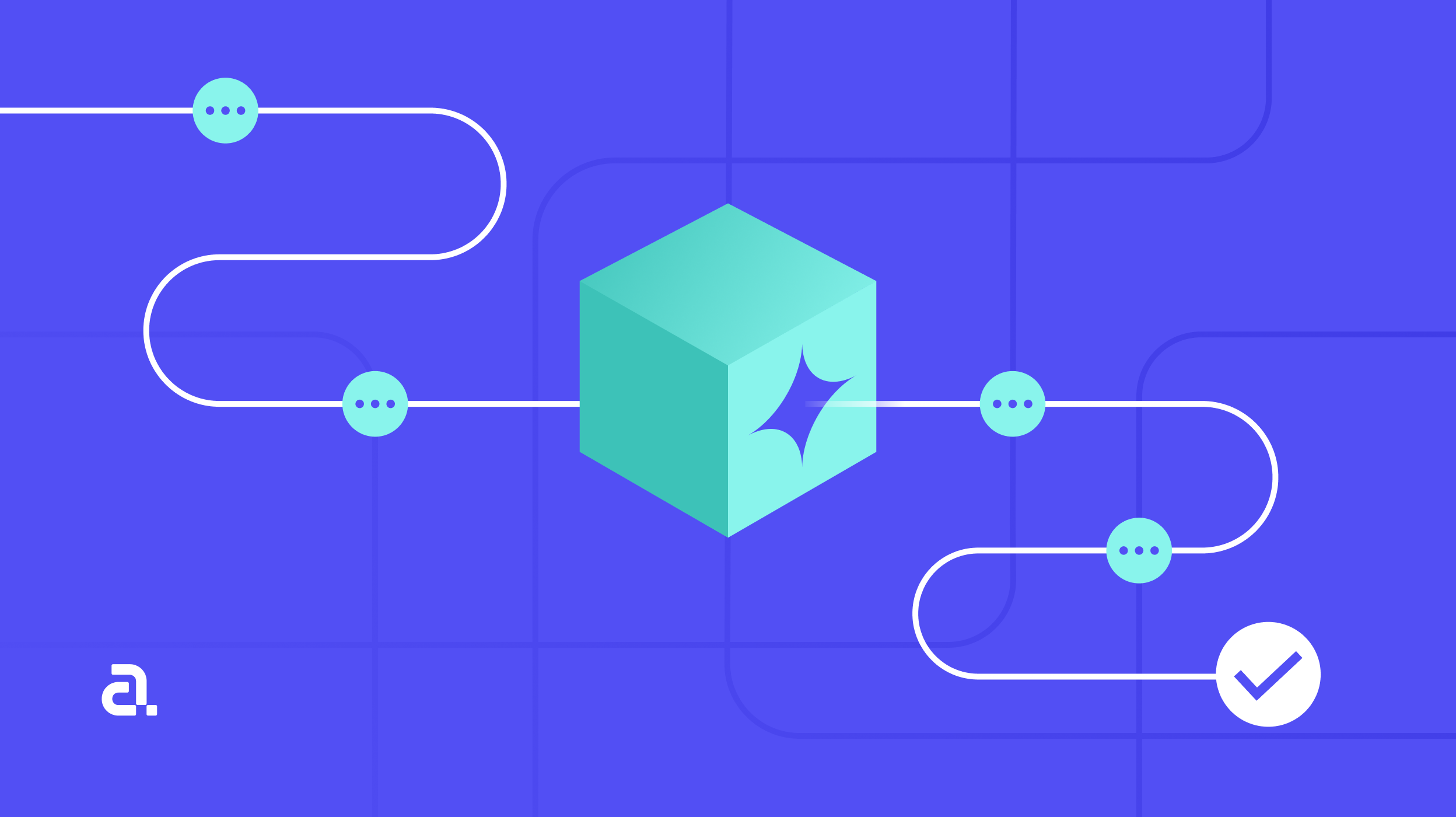A few weeks ago, during a panel at a Google Developer Group event, someone asked me a question that caught me off guard. “What does AI-first mean to you?”
I paused, not because I didn’t have an answer, but because it felt like one of those questions that deserve more than a quick soundbite.
I thought back to something that had happened earlier that morning. I was helping a friend structure a tracking sheet for a pilot program she was running. Instead of building it from scratch, I opened up my chat with an AI assistant and asked it to draft a version.
It took 30 seconds. I didn’t use that version exactly, but it gave me a head start. That moment was a good example of what AI-first looks like. It doesn’t mean you hand over everything to a machine. It means you start with AI in organizations as a foundation, and then bring your own experience, judgment, and creativity on top of it.
This shift in how we approach our work isn’t limited to engineers, designers, or writers. Anyone working in a digital environment can start with AI. The only requirement is a mindset that says, “Let me see what AI adoption can do with this first.”
At Aubergine, that’s how we define being AI-first. It’s not a job title or a role. It’s a way of working. It’s about building a culture where AI adoption is the default starting point for tasks, not a last resort. We think of it as a co-pilot. One that makes us faster, sharper, and more focused on what matters.
AI-first: Empowering all professionals
One of the most powerful aspects of AI in organizations is its ability to level the playing field. It democratizes technology in a way we’ve never seen before.
As Jensen Huang, CEO of Nvidia, so aptly put it:
“AI is the greatest technology equalizer we have ever seen. It lifts the people who don’t understand technology.”
— Jensen Huang, CEO, Nvidia
In most organizations, the shift to becoming AI-first is often driven from the top down. The leadership team sets the vision, and the rest of the company is expected to follow. At Aubergine, however, the shift is much more organic. It’s not just the top executives who embrace AI-first. It’s everyone, regardless of their role, title, or team.
Aubergine’s unique horizontal power structure means that AI’s impact is felt across every level of the organization, not just from the top down. There’s no rigid hierarchy here. Just teams of individuals who all bring their best skills to the table. This structure allows each person to use AI in workplace as a co-pilot in their work, not just as a tool for efficiency, but as a partner in creativity, innovation, and growth.
The ripple effect of becoming AI-first is powerful. It starts with individual empowerment and cascades across teams. When everyone from project managers to software engineers to interns gets involved, the results are immediate and impactful.
For example, recently we created an internal group on our online daily communication channel. We called that group "AI Super Agency". It’s a space where all employees can share tools, tips, and experiments, as well as celebrate progress and wins.
The group’s goal is simple: create a community where everyone can learn from each other, regardless of their role. In the first two hours of launching the group, we saw project managers, leadership, software engineers, and interns were posting their thoughts, AI tool tips, and small experiments.
The enthusiasm and engagement were clear. People were eager to share their experiences, exchange ideas, and ask questions. This was a real-world example of horizontal collaboration, where the contributions came from all corners of the organization. The energy was contagious, and it reflected our shared belief in the power of AI in workplace to enhance our work.


This collaborative spirit is a key aspect of the AI-first approach at Aubergine. When AI in workplace becomes integrated into every team’s workflow, the resulting innovations don’t just come from a few individuals. They come from a collective effort. The beauty of this approach lies in its bottom-up energy. As everyone gets involved, the AI-first mindset spreads organically, helping us break down silos and work toward a shared goal.
This collaborative spirit is a key aspect of the AI-first approach at Aubergine. When AI adoption becomes integrated into every team’s workflow, the resulting innovations don’t just come from a few individuals, they come from a collective effort.
The beauty of this approach lies in its bottom-up energy. As everyone gets involved, the AI-first mindset spreads organically, helping us break down silos and work toward a shared goal.
Because AI-first approach in business is not just about technology. It’s about empowering people to unlock new possibilities and create more meaningful impact.
Aubergine’s five principles of an AI-first organization
Human + AI collaboration
AI in organizations acts like a force multiplier, turning small actions into far-reaching outcomes. Just as a single ripple can expand across water, one human insight amplified with AI adoption can cascade into larger decisions, faster problem-solving, and creative breakthroughs.
At Aubergine, teams experiment in open forums, share tools, and test AI-driven ideas together. A project manager, engineer, or intern can spark an improvement that travels across projects, boosting collective impact. Human judgment and AI scale combine to create a network of amplified action. The result is a culture where small experiments ripple into meaningful innovation.


Research shows that AI-powered augmentation consistently outperforms both human-only and automation-only methods. AI in organizations accelerates human potential, allowing teams to work faster and smarter. Human + AI collaboration is essential for staying competitive in a rapidly evolving world.
The key takeaway is that AI adoption amplifies human strengths. It enhances human expertise and enables people to focus on complex, creative tasks—helping organizations innovate and solve problems in ways that machines alone cannot.
Data-driven, AI-augmented decisions
In September 2025, multiple undersea cable cuts in the Red Sea disrupted internet connectivity between Europe, Asia, and the Middle East. These cables, including SEA-ME-WE-4 and IMEWE, are vital for global internet traffic. The damage caused significant slowdowns and overloaded alternative routes, affecting services such as cloud computing and large file transfers.
This incident highlights the importance of AI in logistics and supply chain management. AI in business can assist in rerouting shipments in real time, considering factors like geopolitical disruptions, weather conditions, and infrastructure limitations. For instance, AI algorithms can analyze current data to suggest alternative shipping routes or modes of transportation, minimizing delays and costs.
By integrating AI into decision-making processes, organizations can enhance their agility and responsiveness to unforeseen events, ensuring smoother operations and better service delivery.
Awareness of pitfalls & biases
AI models are powerful tools, but they are not without their flaws. They learn from the data they are trained on, and if that data carries biases, those biases can be inherited by the AI. In the context of hiring, for example, AI systems might unintentionally favor candidates based on historical hiring patterns that disproportionately favor one gender, race, or socio-economic group over others.
Consider the case of AI in recruitment. Many companies today use AI-based tools to screen resumes or shortlist candidates. These systems often look for patterns in resumes that align with the company’s past hires.
If the company's past hiring practices were biased, for example, hiring predominantly male candidates for tech roles, the AI model might unintentionally replicate that bias, giving preference to male candidates over equally qualified female candidates.
This is a real risk for AI in human resources, and it can perpetuate the cycle of inequality.
At Aubergine, we believe that AI-first must also mean AI-responsible. We implement critical oversight and accountability to ensure our AI systems remain ethical and fair. For instance, AI can be trained to disregard demographic information like name, gender, and ethnicity, and instead focus on skills and experience relevant to the job.
This approach helps remove bias from the decision-making process, leading to a more equitable hiring process. Additionally, AI tools can identify underrepresented groups and help ensure that hiring practices are more inclusive, giving companies the ability to diversify their teams and create a more level playing field for all candidates.
While AI holds incredible potential for transforming hiring practices, it’s crucial that we keep accountability at the core of its implementation. AI-first organizations must continuously monitor the outcomes of these systems to ensure they align with their core values of fairness and responsibility.
Scale through automation, not just effort
In industries like banking, where manual processes are still prevalent, automation can be a game-changer. Manual data entry, client onboarding, and fraud detection are just a few examples of processes that can be significantly enhanced through automation. By automating these repetitive tasks, banks can free up employees to focus on higher-value tasks like strategic decision-making, customer relationships, and innovative product development.
Consider a real-world example from HSBC. The bank recently implemented AI-driven automation in their fraud detection systems. Previously, manual checks were time-consuming and limited in scope. With AI, HSBC is now able to monitor transaction data in real-time, identify anomalies, and flag potential fraud more accurately.
HSBC reported a 20% reduction in false positives, allowing them to focus on real threats without wasting time and resources on harmless transactions. This has not only improved security but also increased customer satisfaction by reducing the number of false alarms.
This shift from manual effort to automated intelligence shows the impact of AI on traditional banking. It’s not just about replacing jobs, it’s about freeing up valuable human resources to focus on more complex tasks that drive the business forward.
Celebrate failures & experimentation in the open
In an AI-first organization, it is not enough to adopt tools and workflows. People need to feel safe to try new approaches, even when they fail. At Aubergine, we realized this early on when one of our teams experimented with AI-assisted design for a client interface.
The first attempt completely missed the mark. Instead of discarding it quietly, they shared it in our internal AI sandbox, explaining what worked, what didn’t, and what they had learned. Within hours, other teams were engaging, suggesting tweaks, and building on the ideas.
This openness created a ripple effect. Small experiments became shared learning, and lessons from failure informed faster, more confident decisions across the company.
Teams began to see failure not as a setback but as an essential step in refining approaches and uncovering unexpected opportunities. Open forums for AI experimentation, internal demos, and collaborative problem-solving have become standard, encouraging employees to test tools, share discoveries, and normalize quick failures.
The lesson is clear: experimentation is the fuel for innovation. AI tools can accelerate results, but only when people are empowered to explore, adapt, and iterate. By celebrating failures in public spaces, companies create a culture where learning is continuous, curiosity is rewarded, and breakthroughs emerge from collective effort rather than isolated success.
The future of work
When I think about the future of work, I picture teams collaborating with AI adoption as a co-pilot rather than a tool on the side. I’ve seen it in action at Aubergine, how small AI-driven changes ripple across projects and workflows, speeding up decisions, surfacing insights, and giving people space to focus on what really matters. It is not about replacing human judgment but amplifying it.
Organizations that embed AI in business responsibly move faster, spot opportunities earlier, and empower their teams to work smarter. The shift is not only top-down; it travels sideways too. In a flat, team-driven setup, every individual’s expertise multiplies when paired with AI. The smallest experiments or insights from one corner of the organization can spark innovation across the whole company.
I believe the real promise of AI-first work lies in this balance. AI in business scales our reach, our understanding, and our speed, but humans remain the heart of every decision. The companies that succeed in the next decade will be the ones that harness AI in business at scale while keeping humans firmly at the center. That is where speed meets judgment, data meets empathy, and innovation truly happens.







.webp)

.webp)